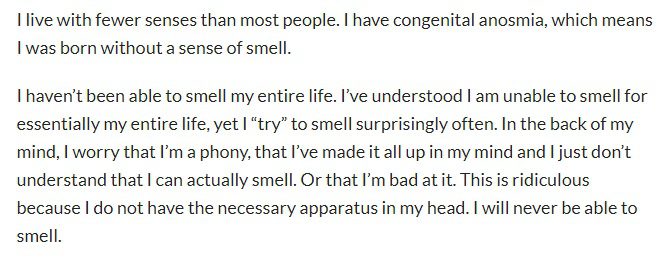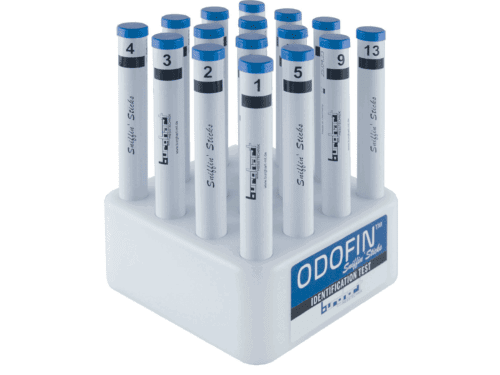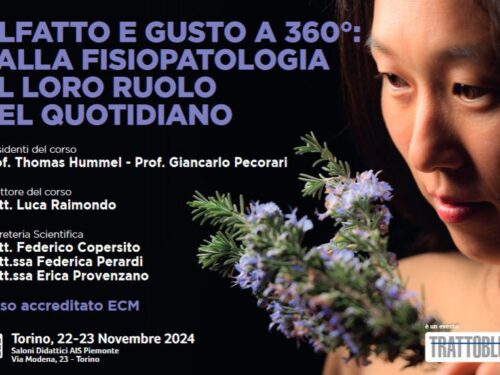
Congenital anosmia is a condition in which people are born with a lifelong inability to smell. Not being able to smell can have a major impact on a person’s life, both in a practical sense and certainly emotionally. From childhood fears and awkward teenage moments, to a sense of failure when you can’t tell your baby’s diaper needs to be changed. Also, people with congenital anosmia often indicate that they do not feel understood and not heard. Both the environment such as family, friends and colleagues, but also doctors sometimes underestimate the subject.
Fortunately, more and more researchers are working in the field of smell and taste and the subject of anosmia (including congenital anosmia) is receiving more and more attention. Through the many scientific studies, researchers hope their findings will motivate clinicians to take odor problems more seriously, with better help and support to patients. According to studies, congenital anosmia occurs in one in 10,000 people. This includes people with congenital anosmia caused by a particular genetic disorder and people with isolated congenital anosmia.
In what forms does congenital anosmia occur?
People who are born without smell are often completely unaware of it until they get older and come into more contact with other people. For example, children come into contact with other children at school and situations arise where it begins to be noticed that someone cannot smell. Congenital anosmia can occur in different ways, we will discuss the following forms below:
- Congenital anosmia can occur as an isolated abnormality where there are no additional symptoms. Isolated congenital anosmia is rare in people with no family history of the condition.
- Congenital anosmia may also be associated with a specific genetic condition such as Kallmann syndrome or congenital insensitivity to pain.
- Another possible option is CHARGE syndrome. This is a rare syndrome caused by an abnormality on chromosome 8.
Isolated congenital anosmia

When isolated congenital anosmia affects more than one family member, it may have a genetic component. One study showed that some people affected by isolated congenital anosmia have changes (mutations) in the PROKR2 gene or PROK2 gene. These genes have been previously reported in people with Kallmann syndrome (an inherited condition associated with congenital anosmia and other symptoms). Another study found that two brothers with anosmia had a mutation in the CNGA2 gene. However, in most familial cases of isolated congenital anosmia, the cause remains unknown.
Kallmann syndrome and anosmia
Kallmann syndrome (KS) is a condition that causes hypogonadotropic hypogonadism (HH) and a decreased sense of smell. It is a rare hereditary hormonal disorder and is expected to affect 1 in 10,000 to 1 in 50,000 people. It is estimated that men are two to three times more likely to get it than women. HH affects the production of the hormones necessary for sexual development. It is present from birth and is due to a deficiency of gonadotropin-releasing hormone (GnRH). KS is often diagnosed at puberty due to lack of development. It may first be suspected in childhood in men with undescended testicles or a small penis. Symptoms in untreated adult males may include decreased bone density and muscle mass; small testicles; erectile dysfunction; low sex drive; and infertility. Untreated adult women with KS usually have no periods (amenorrhea) and normal, little or no breast development. Most cases of KS are sporadic (not inherited), but some cases are inherited. The mode of inheritance depends on the gene involved.
Anosmia is also a symptom of Kallmann syndrome. One type of congenital hypogonadotropic hypogonadism is called Kallmann syndrome (CHH). Another name for it is isolated GnRH deficiency. The name Kallmann syndrome is only used when the sense of smell is affected; CHH can exist without a normal sense of smell. In almost 50% of CHH cases, Kallmann syndrome is the diagnosis.
Charge syndrome and anosmia
Another possible option is CHARGE syndrome. This is a rare syndrome caused by an abnormality in chromosome 8. It can manifest itself in a variety of problems, including heart failure and sensory abnormalities; including smell.
Most children with CHARGE have an absent or reduced sense of smell (cranial nerve I), which makes learning to eat normally. Most patients with CHARGE syndrome have absent or abnormal olfactory bulbs in MRI, leading to a decreased sense of smell. Odor tests can predict the presence of hypogonadotropic hypogonadism. The combination of impaired sense of smell with hypogonadotropic hypogonadism (called Kallman syndrome) results in small external genitalia. This is very common with CHARGE syndrome and requires consultation with an endocrinologist.
Congenital insensitivity to pain (CIP)
A very unusual condition called congenital insensitivity to pain prevents people from feeling physical pain. Since it affects the peripheral nervous system, which connects the brain and spinal cord with muscles and cells that sense sensations such as touch, smell, and pain, it is considered a type of peripheral neuropathy. Since the same channels that transmit pain signals from the pain site to the brain can also disrupt the channels in the olfactory sensory neurons that transmit odor signals to the brain, many patients with congenital insensitivity to pain also lose their sense of smell completely.
Diagnosis of Congenital Anosmia
Examinations by an ENT doctor are necessary to diagnose congenital anosmia. A diagnosis is made by looking at all possible causes that can cause odor loss. The following tests may be needed to support a congenital anosmia diagnosis:
- A complete physical exam and medical history to look for other causes that may affect the smell.
- Taking smell tests, especially those that identify the smallest amount of smell a person can detect, can be done with the help of the Sniffin’ Sticks smell tests or Sensonics smell tests.
- Scan of the brain (such as a CT scan) to check for abnormalities in the area of the brain that processes smell.
- A nasal endoscopy to check for abnormalities in the nasal cavity that could affect odor.
- Testing the olfactory nerve to detect obstructions in the information transmission pathway from the nose to the brain.
What other forms of anosmia are there?
In addition to congenital anosmia, there are other causes that can cause anosmia:
- Chronic nasal sinus conditions, such as chronic sinusitis, nasal polyps, and/or rhinitis (inflammation in the nose caused by viral, bacterial, or fungal infections), can prevent odor molecules from reaching the odor receptors or interfere with the receptors’ ability to detect odors.
- The odor receptor cells can be damaged or destroyed by viral respiratory infections (eg colds, flu, viruses including corona).
- A head injury can damage the brain’s processing centers for odor information, as well as the olfactory nerve fibers that carry odor information to the brain.
- Aging – repeated exposure of the olfactory receptors to environmental pollutants in the air can damage the odor receptors and/or the receptor cells may lose the ability to regenerate.
In contrast to congenital anosmia, in other forms of anosmia, it may make sense to begin smell training using an smell training kit to stimulate the recovery of the sense of smell. This is especially useful for loss of smell after brain injury or loss of smell after a viral respiratory infection, such as after corona or a severe flu. Unfortunately, smell training has no effect in congenital anosmia.
How do you know if your child has congenital anosmia?
If your child doesn’t respond to common smells, avoids foods with strong smells, or complains of a poor sense of smell, they may have a congenital anosmia. While it may not seem like a big deal, congenital anosmia can be quite distressing for children and affect their quality of life. If you are concerned about your child’s sense of smell, we always advise you to seek medical attention. A therapist can give your child the tools they need to manage their condition and may be able to offer treatments that can improve quality of life.
Also read this interview with 22-year-old Gabriella who explains how she found out she couldn’t smell and how she and her parents dealt with it.
Experiences and help
Having anosmia can have a major impact on quality of life. There are various associations and support groups where fellow sufferers can exchange experiences. Please take a look on the website of anosmia awareness for more information and helpful resources.
Would you like to read an interview with someone with congenital anosmia? Read a very interesting article here that shows how much influence the lack of smell can have on life and how difficult it is for other people to put themselves in someone’s shoes who can’t smell anything. A small excerpt from this article:

The BBC also pays attention to this subject, on their website you can read an interview with 22 year old Gabriella who explains how she found out that she and her sister have no sense of smell and how they deal with it. Read the article via this link.
Not having a sense of smell can have different kinds of impact. According to a study from the University of East Anglia. This study reveals the vast array of emotional and practical effects caused by the loss of smell. It finds that almost every aspect of life is disrupted – from everyday concerns about personal hygiene to loss of sexual intimacy and the breakdown of personal relationships.







